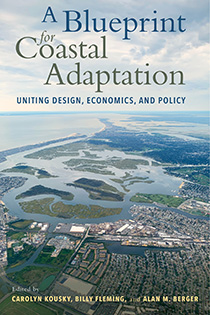"Everyone should read this book to see how the field of landscape architecture might help cities adapt to a changing climate, particularly with new federally-funded infrastructure investments. Each chapter of this book reaches beyond the conventional limits of our professional knowledge, by degrees or by leaps. But the most important bar this anthology has set for other books about adaptation is to place questions about funding and policy side-by-side with design proposals."
The Dirt | ASLA
"The publication aims to mitigate the inequities that are amplified in global emergency scenarios. It offers insight into how to navigate the institutions and entities involved in coastal adaptation, while providing an alternative design strategy for infrastructural, landscape and urban adaptation. It acknowledges the world of landscape adaptation as a collaborative endeavor, and insight into the scope for action and the thinking required to transform vulnerable coastline areas."
Landscape Australia
"Coastal vulnerability and adaptation are so, so complex, and are often treated in narrow, economistic ways that underplay the roles of politics, culture, infrastructure, and resistance by private interests. I’m excited to see this partnership of design schools with business schools and their taking up of such a range of issues. This is a breakthrough volume."
Timmons Roberts, Professor of Environmental Studies and Sociology, Brown University and coauthor of "Power in a Warming World"
"This collection provides a range of ideas and stories grounded in present systems and structures. It identifies challenges and recommendations that will help support early transitions in the next phase of coastal adaptation planning, policy, and practice."
Kristin Baja, Programs Director, Climate Resilience, Urban Sustainability Directors Network

